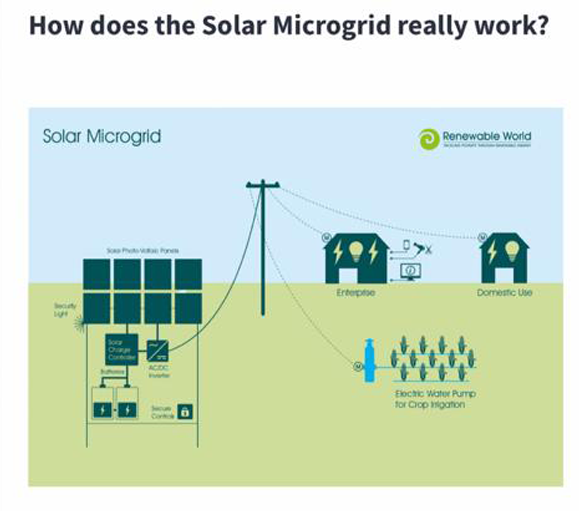Solar Microgrids are integrated networks or ‘grids’ of power. Think of it in the same way that you and your neighbors receive your electricity – through a shared network. Using energy generated from the sun, the system captures, stores, and distributes clean electricity to an entire community. This is done by installing large, high-quality solar panels and batteries in a central location. Sometimes called a ‘hub’, this central location is where all the technology is stored in a secure room, often underneath the solar panels themselves. Once the technology has been installed, the solar microgrid is completed by connecting electrical wiring from the central power location to nearby houses, businesses, and farms.
Solar Microgrids have been used to power homes, hospitals, schools, businesses, irrigation pumps for agriculture, streetlights, and more.

